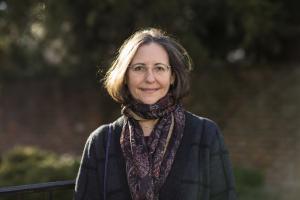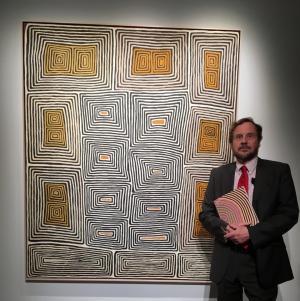Please note: the Mellon Indigenous Arts program ended in 2021. This web site is now for reference only. |
The Mellon Indigenous Arts Initiative is pleased to announce two Mellon Arts Fellows for 2019-20. Each faculty fellow will research and develop a new course curriculum related to Indigenous arts.
Lise Dobrin, Associate Professor & Director of the Interdepartmental Program in Linguistics, Department of Anthropology
Project Title: Curating Melanesian Culture

Lise Dobrin is Associate Professor of Anthropology and Director of UVA’s Linguistics Program. Much of her research and writing is focused on cultural considerations in endangered language preservation. Arapesh people of Papua New Guinea are at the center of her work. In collaboration with UVa’s Institute for Advanced Technology in the Humanities she curates the Arapesh Grammar and Digital Language Archive, a repository of Arapesh linguistic and cultural materials that she and other researchers have collected; she has developed methods for digitally returning transcribed texts to communities with limited internet access; and she is embarking on a new project to digitally publish a book-length village history composed by Arapesh intellectual Bernard Narokobi.
Dobrin’s goal as a Mellon Indigenous Arts Fellow is to increase the scholarly value, visibility, and utility of the Oceanic art in The Fralin Museum’s collection by bringing focused attention to it through teaching, research, and programming. In spring 2020 she is teaching a new course, ANTH 3559 Curating Culture: Collection, Preservation, Display as Cultural Forms, in which students explore how and why cultural meanings matter for the curation of museum holdings drawn from Indigenous communities. The regional focus is on Melanesia. The course builds on Dobrin’s work curating Arapesh intangible heritage such as audiorecorded texts and the material culture held in The Fralin’s Oceanic art collection. Students will focus on a selection of objects in the Fralin to study and help build up the objects’ research files. Dobrin’s class will host a visit from Cristela Garcia-Spitz, curator of the Tuzin Archive for Melanesian Anthropology at the UC San Diego Library. As their final course project, students will curate an exhibition of New Guinea string bags or bilums in the central Commons of UVa’s former natural history museum, Brooks Hall.
Mark Thomas, Professor of History and Economics, Departments of History and Economics
Project Title: The Market for Indigenous Australian Art, 1975-2019

Professor Thomas, a quantitative economic historian who was trained in Economics but who teaches in a History department, will develop research and a course on the Economics of the Art Market, with special reference to Indigenous Art and Artifacts. His research is an outgrowth of projects funded by the Australian Research Council which studied pathways to repatriation of Australian Indigenous ancestral remains, and which revealed the fundamental role of market exchange in the removal of remains in the first place. As a Mellon Indigenous Arts Fellow, Thomas will focus his skills in analyzing market transactions to study the trade in Indigenous artifacts and art. Using already assembled data on fine art auctions, Thomas will develop a deeper understanding of the mechanisms of the secondary market for Aboriginal art, both within Australia and globally, in the context of the market for Indigenous art more broadly (i.e. including sales of Native American art and African art), as well as the market for fine art in general. Although some US universities offer courses on the Contemporary Art Market or the History of Art Markets more broadly, a course that focuses on the market economics of Indigenous art is groundbreaking. The goals of the course are to understand the development of Indigenous art as a new art market; to explore the tensions between new and established markets and how/if these are resolved; to understand the dynamics between the major players (artists, buyers, dealers, and auction houses) in shaping the market-place; to understand the role of the regulatory environment, such as export restrictions and codes of practice, on market outcomes; and finally, to explore the interactions between market behavior and artistic creation itself (often posed as, ‘does the market distort authentic cultural practices?’). Visits to Kluge-Ruhe and to The Fralin Musem of Art will be integrated into the class and students will be asked to reflect on the ways in which tastes and fashion have affected the market for Indigenous art.